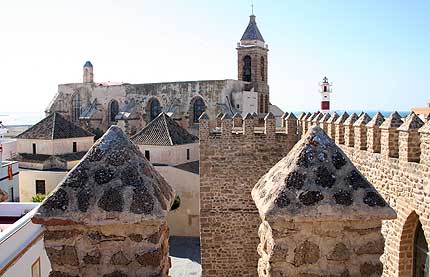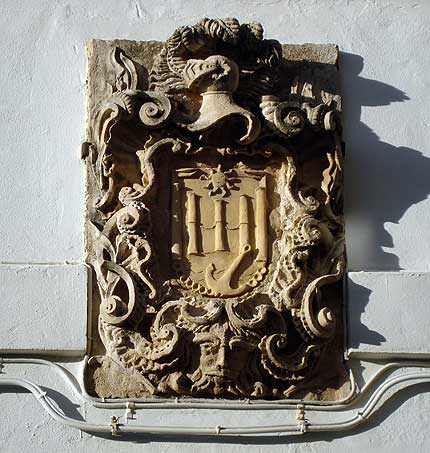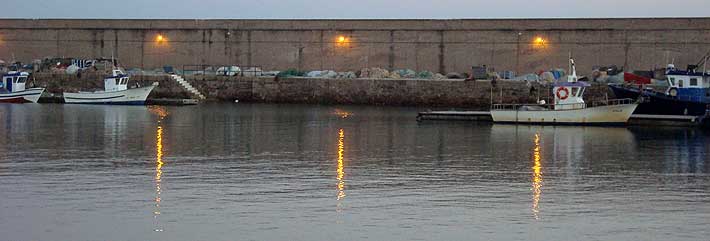History of the Town of Rota
The first archaeological remains date back to Prehistory. A Copper Age necropolis has been found. The Villa de Rota was presumably founded by Phoenician merchants, who also founded Cádiz. These explorers and merchants gave it the name Astaroth, which means "Port of Asta", Asta Regia being one of the towns in Tartessos. Later, Rota passed into Roman hands, under whose rule it was given the name Oraculum Menestei and later Speculum Rotae. There is also talk of Oleastrum, geographically located by Pliny and Mela.

Later, when the Arabs arrived, it was named Rabita Rutta, later becoming Rutta. The Muslims made the town a fortress, as a result of the Norman incursions. There are documents that talk about Rota as a place of pilgrimage, where the fortress is referred to as ribat.
In 1197, Ibn Arabí of Murcia, a Muslim philosopher and mystic, visited it. In 1248, with the capture of Seville by Ferando III, Rota was subdued, following agreements that allowed the entire region a certain degree of autonomy. After the capture of Cadiz, a Mudejar uprising took place, with the Castilian garrison that had remained in Rota being murdered. After the capture of Jerez in 1264, the Mudejar population was expelled. The land distribution was carried out among those who had participated in the occupation, always subject to social status. However, life there was nothing short of harsh, given the state of the buildings and the constant attacks by the Muslims.

Once Christianized, its name became Rotta and, finally, Rota. In 1285, Sancho IV granted the administration of the Almadraba (net or encirclement of nets near the coast used to catch tuna) so that the money could be used to defend the area by building watchtowers.
In 1297, Fernando IV transferred the town and its entire municipal area to Alonso Pérez de Guzmán, as a reward for his victory in the defense of Tarifa. He began the construction of the Castillo de Luna (1295). In 1303, he ceded it to his daughter Isabella, upon her marriage to Fernán Pérez Ponce de León, Master of Alcántara and First Lord of Marchena. In 1349, Alfonso XI confirmed Pedro Ponce de León's possession of the town with inheritance rights.
The Catholic Monarchs visited the castle in 1477 and stayed at the castle, invited by Rodrigo Ponce de León, on October 6 and 7. They granted him the title of Marquis of Cádiz.
Until 1493, the port of Rota had played a leading role in trade relations with North Africa, but due to a royal prohibition, the facilities were not used due to the centralization of the port in Cádiz. Even so, it appears to have continued to be used, as evidenced by the King's repeated letters to cease commercial operations.
In 1522, the plague broke out.

There is evidence of Berber attacks, aided by the Turks. One in 1559, where they destroyed the galley of the captain-general who was spending the winter in Rota. Another in 1562, and yet another in 1572. This led to the fortification of the place with the construction of cannon batteries.
In 1569, the plague struck again. In 1680, another epidemic broke out, accompanied by crop shortages, so in 1687, Carlos II granted exemption from some taxes.
After the death of Carlos II, the War of the Spanish Succession began, and the coasts of Rota were invaded by the Anglo-Dutch army in 1702. The Rota dock was used for the disembarkation of their troops. Almost a month later, they withdrew after taking Puerto Real, due to the heavy casualties they had suffered.

In 1780, upon the death of Antonio Ponce de León, 11th Duke of Arcos, without leaving a successor, the kingdom passed to Pedro de Alcántara Téllez-Girón y Pacheco, 9th Duke of Osuna, and with it the Duchy of Osuna.
In 1800, Yellow Fever broke out.
In 1810, the French arrived in the region of Cádiz, staying until 1812.
In 1823, with the abolition of lordships at the national level, the Duchy of Osuna lost its jurisdiction over the entire region.
Cholera arrived in 1834, along with an economic crisis that had been present for a decade.
In 1836, the Mercedarian convent was abandoned due to the Mendizábal confiscation.
In 1873, Rota declared itself an independent canton from July 22 to August 3.
In 1955, the Rota Naval Base was established, which led to an increase in businesses and the gradual abandonment of agriculture and fishing. Today, the city's wealth is primarily oriented towards tourism.

Primarily based on fishing, although it also has a strong agricultural tradition. Rota occupies a strategic location in the Bay of Cádiz, which has always given it a certain importance under the various peoples who have taken it as their own. For example, the almadrabas (fish traps) have played a significant role in its history, one of which, of natural origin and presumably originally used by the Romans, is currently being restored and reused (Los Corrales).
Rota is also the birthplace of a unique sailor named Bartolomé Pérez, who accompanied Columbus as a crew member of the caravel "La Niña" on the first voyage. He also served as pilot on the caravel "San Juan" on the second.


